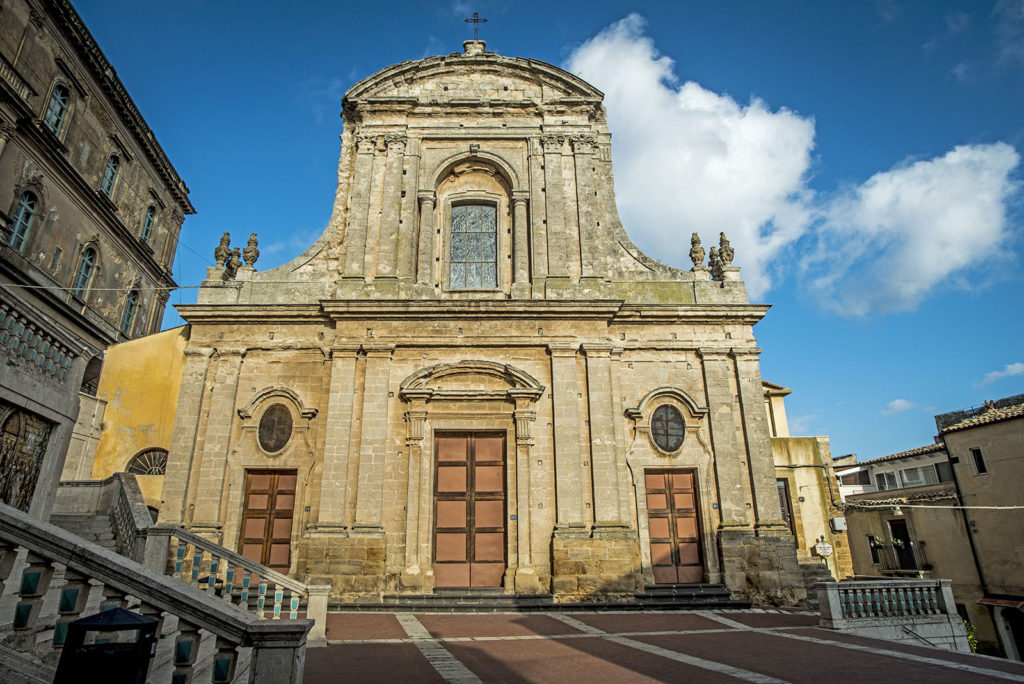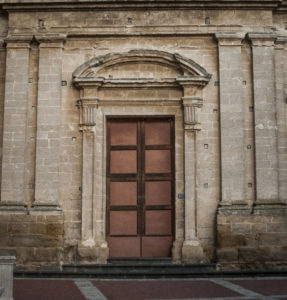The church stands with its austere size on the hill in the historic centre of Caltagirone.
To reach it from below you need to take the 142 maiolica steps of the monumental
staircase
of the same name, built in 1606 to unite the Church with the Town Hall.
The view from below of the long and majestic staircase, where there are small side openings similar to theatre flats, reveals the church elevation, which can be seen from the final steps, opening onto the square. The building’s foundation dates back to the
12th century
and like most ecclesiastical buildings in the Val di Noto, it suffered from damage caused by the earthquake of 1693.
The long reconstruction was distinguished by some projects.
In 1739 the church was already well under way but, a few years after its completion, the bell tower collapsed, damaging other parts of the building.

 This was when the architect
Francesco Battaglia
This was when the architect
Francesco Battaglia
from Catania intervened and designed the new project.
The façade, entirely made of carved stone, is austere and sober, divided into two superimposed levels, with no dynamic ornaments apart from the two volutes and curved top that soften its severe lines.
In the more articulated central part, there is a portal with a large
Venetian window
above, with two small free-standing columns and the two side entrances framed by an elegant curved design and embellished by an oval opening.